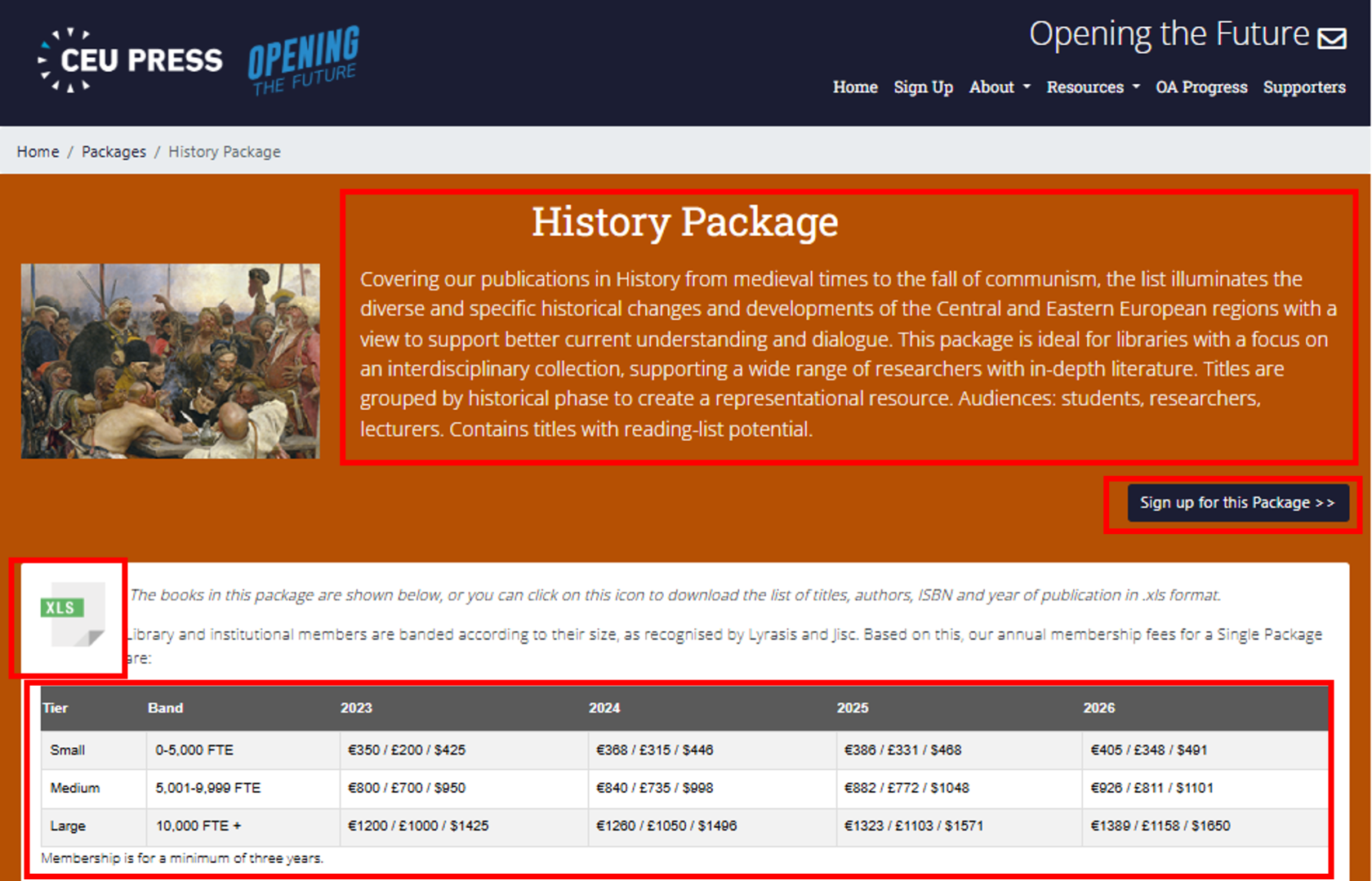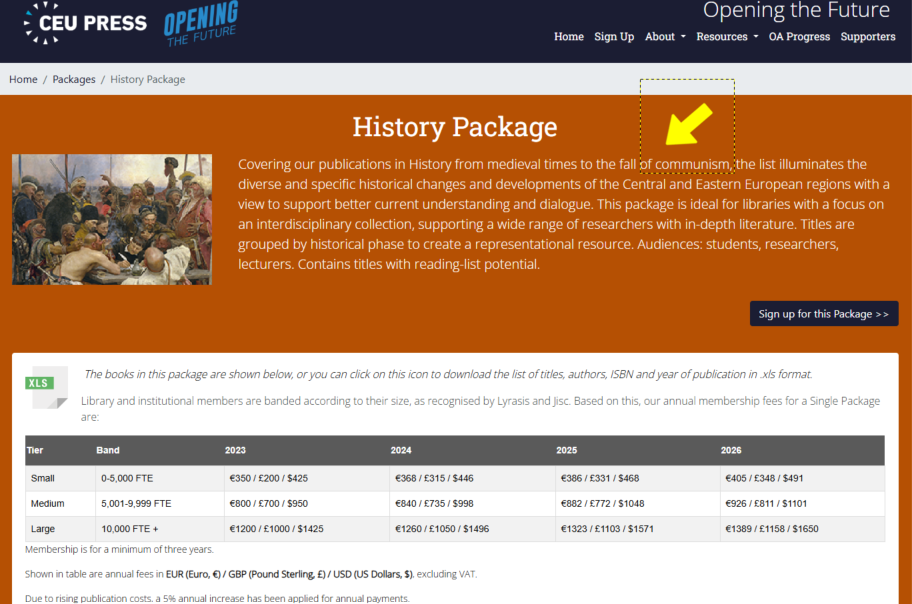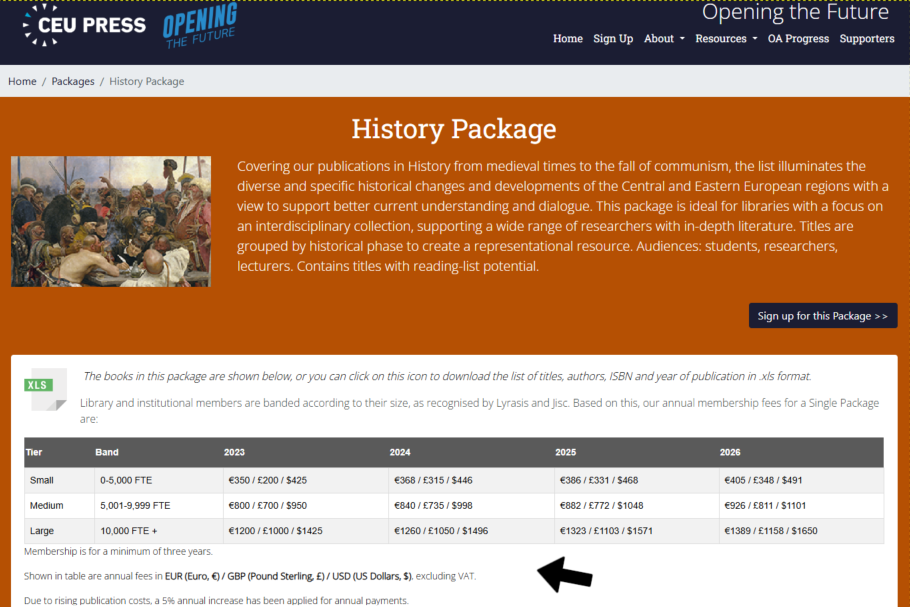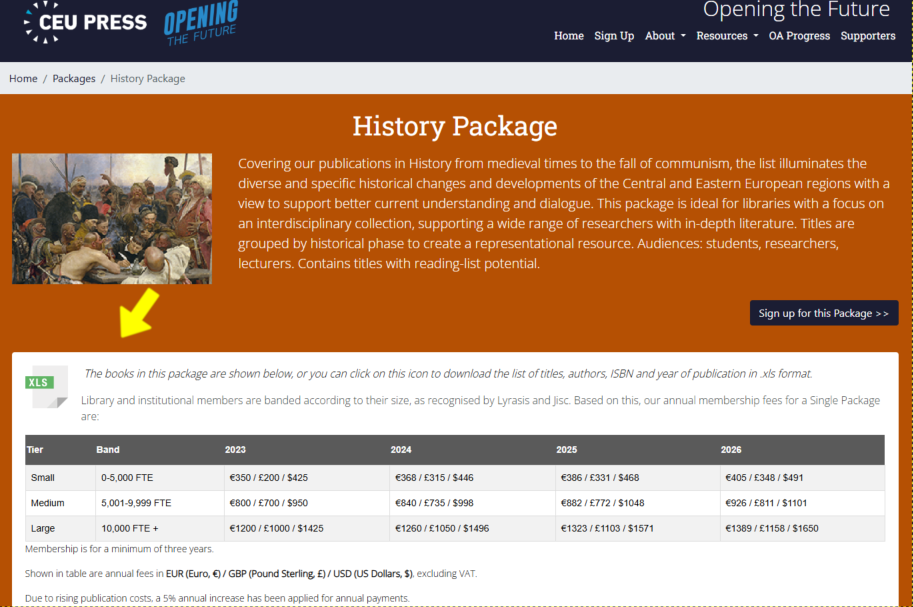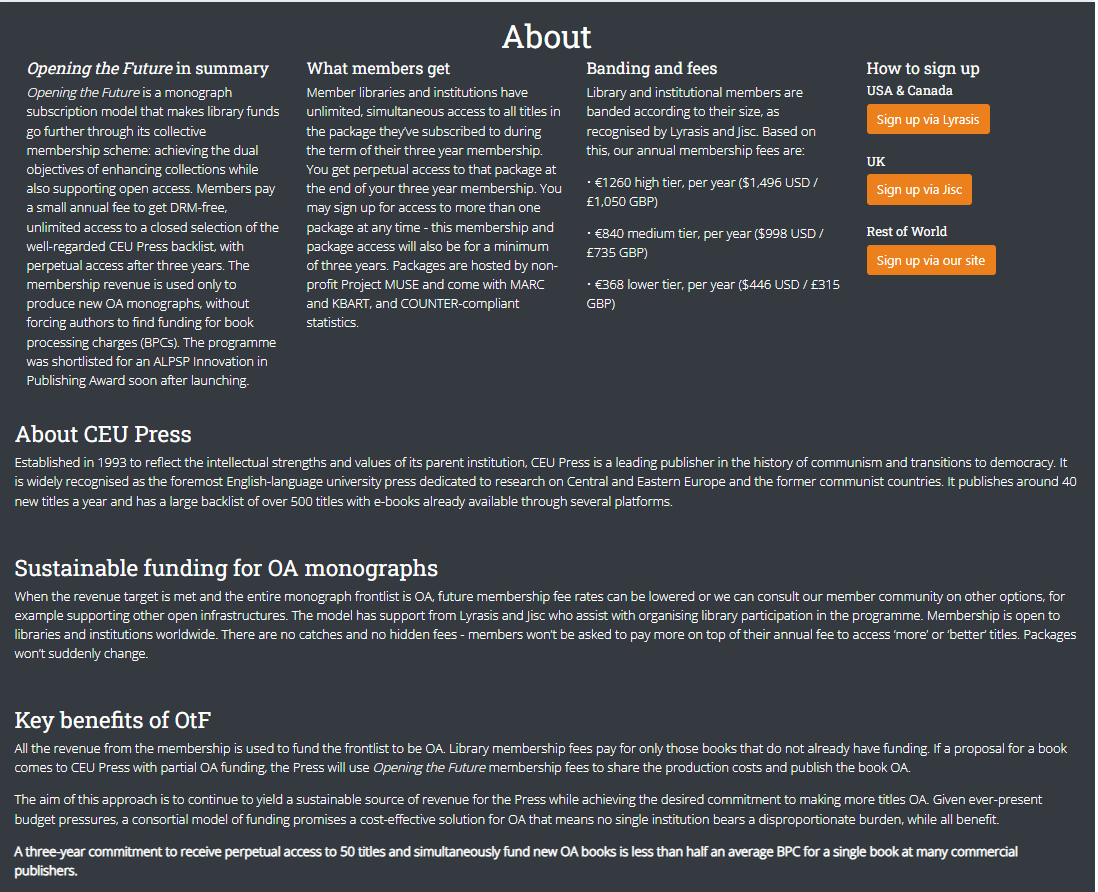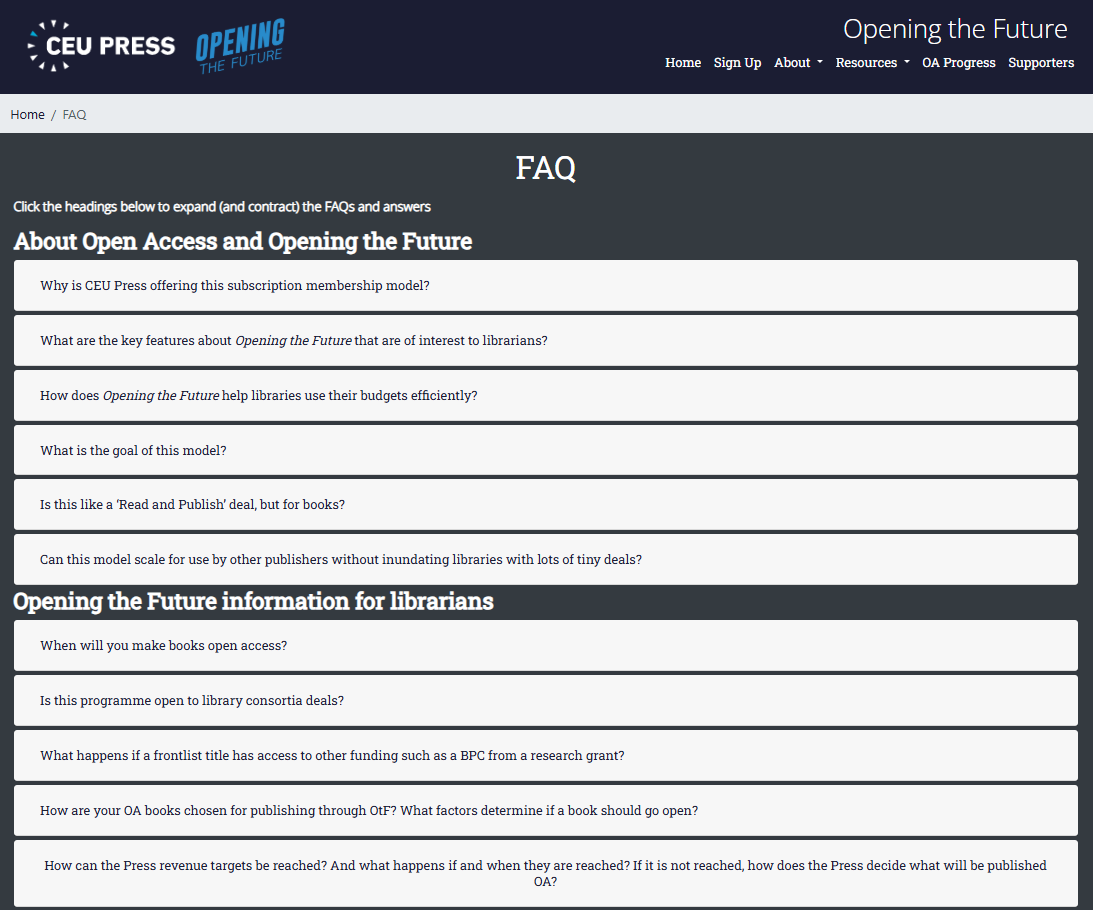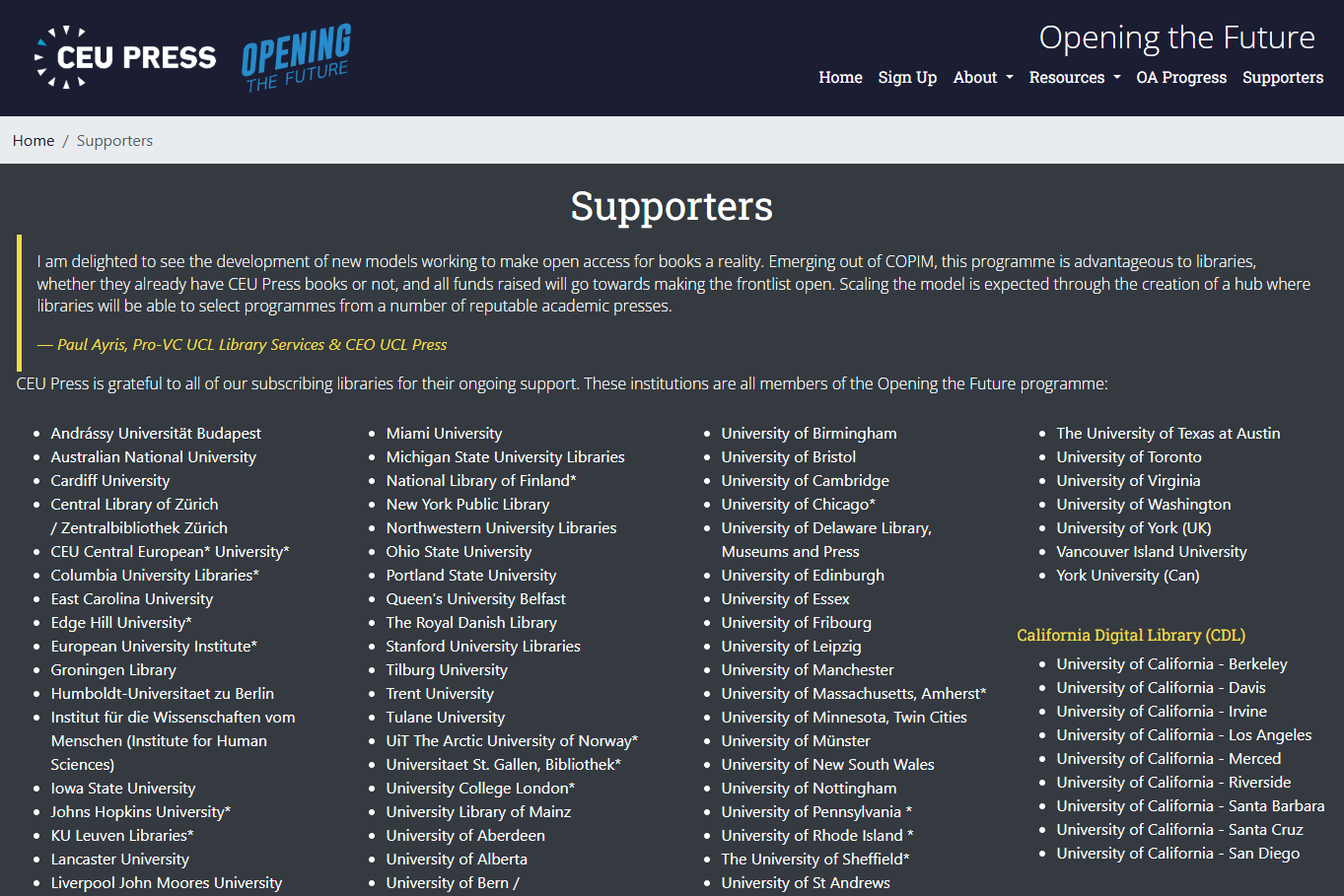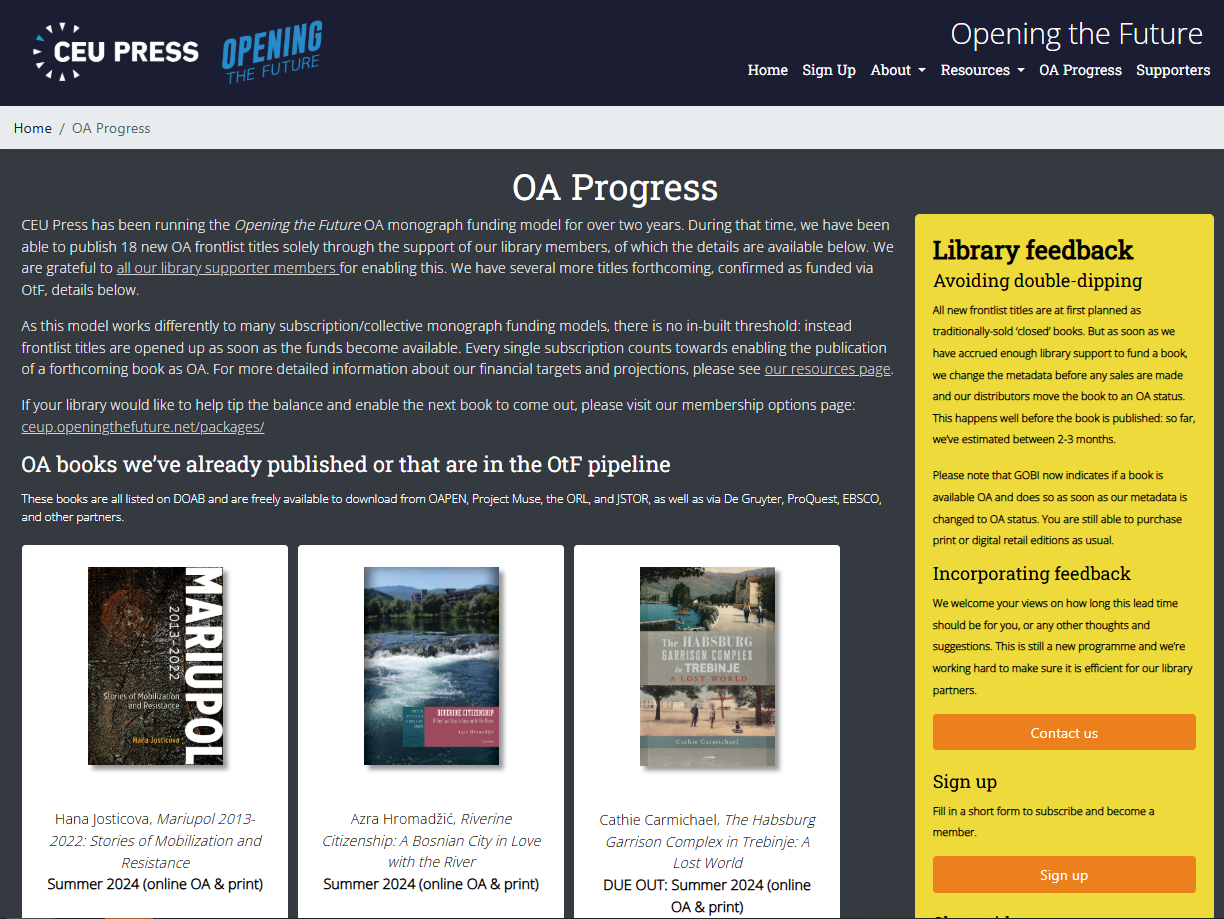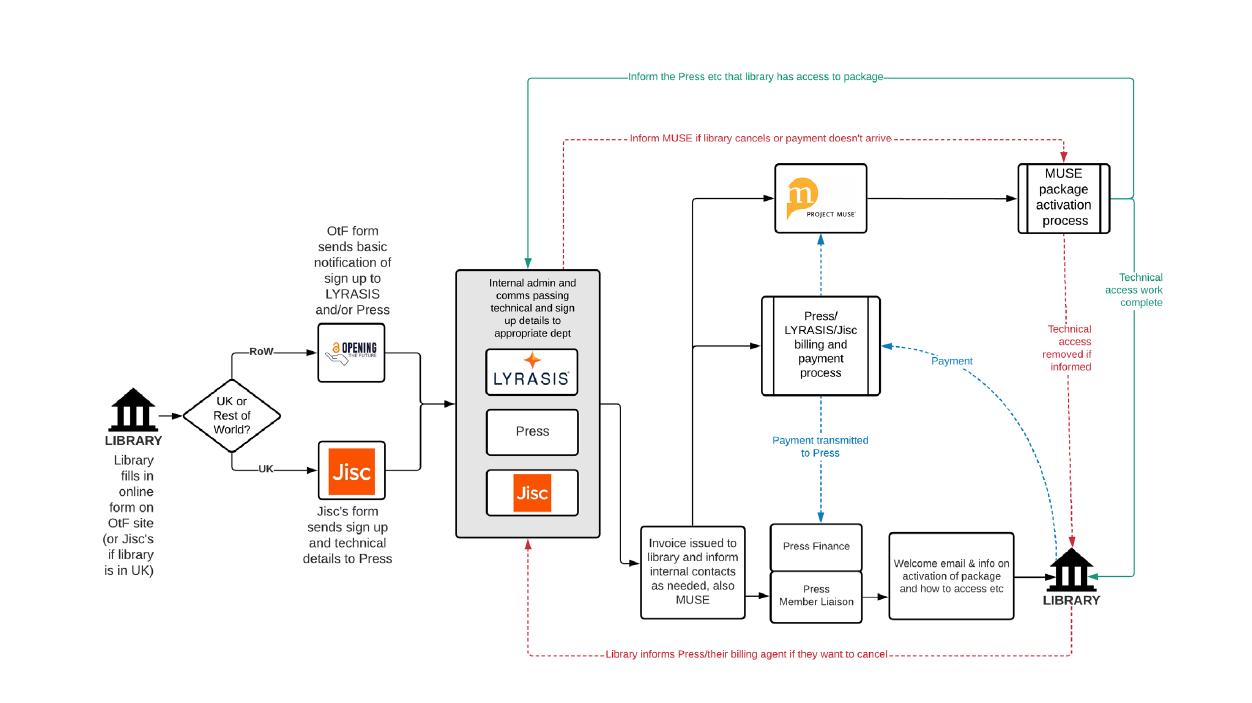Further logistics and workflows
- You will need to display information on what packages of backlist books you are offering, and where to sign up for them.
- A sign up or simple enquiry form could be on your website, or on that of a 3rd party, and/or it may point potential members to the subscription pages on Jisc and Lyrasis' websites.
- If you are handling your own sign ups, or for those not handling by another party, you will need to capture a few details but this can be as straightforward as a contact form with a few mandatory fields.
- Your backlist content delivery platform of choice will need to provide appropriate metadata and metrics as well as gated, time-bound access to the backlist package for members. We have suggestions for platform providers in the section on 'Organisational Partnerships'.
- We recommend using the lightweight Shared E-Resource Understanding (SERU) to govern library access to the backlist.
- Transparency is crucial on where library member investment has been spent (i.e. you need to display information on what books have been published by members, and who those members are)
Making your offer public and transparent
You will need to make some updates to your Press website in order to promote and implement Opening the Future effectively; libraries need clear information about what is on offer, and what the funds raised are for. Even if you are using a 3rd party partner to deliver some or all of the programme, you will need at least to display the following information as a minimum on your and/or their website or portal:
- A list of your backlist offering(s) i.e. what books are included in the deal, why they are important in their subject, what topics are covered
- We recommend also supplying a simple downloadable list of the titles with some extra metadata like co-authors, ISBN etc
- The price bands for different institutions, and for the duration of their subscription (noting any annual increases)
- A link to the sign up process you use - make it easy for libraries to engage with as few clicks as possible
- General information about the model, why you are implementing it, how it works, and the key benefits to the library and to you as the publisher, as well as some information about your press. You will have your own reasons for implementation and what benefits you feel your particular offering has to libraries; the information on how it works can be adapted from this toolkit.
- FAQs of useful information for libraries and authors; we have reproduced our FAQ page later in this toolkit for you to draw from.
- A section or page listing and thanking your library supporters: an important pillar of community-funded programmes like OtF is transparency not only on prices but on who else is involved too. Note also that some libraries are more likely to sign up when they can see others in their network are also involved.
- An updateable section or page collating the list of titles you have published so far using Opening the Future and titles that are earmarked for Opening the Future but are still forthcoming. This should contain links to access the published OA books, be that on OAPEN or elsewhere. This is another crucial pillar of community-funded programmes: as trusted stewards of their institution's money, library members need to know how/where that investment is being spent. Information on what has been published through their investment may also be critical for libraries building internal cases to justify renewing their membership.
You can expand the box below to see example web pages of how the Copim project displayed this information for Central European University Press's OtF programme.
Example web pages displaying crucial OtF information for CEU Press
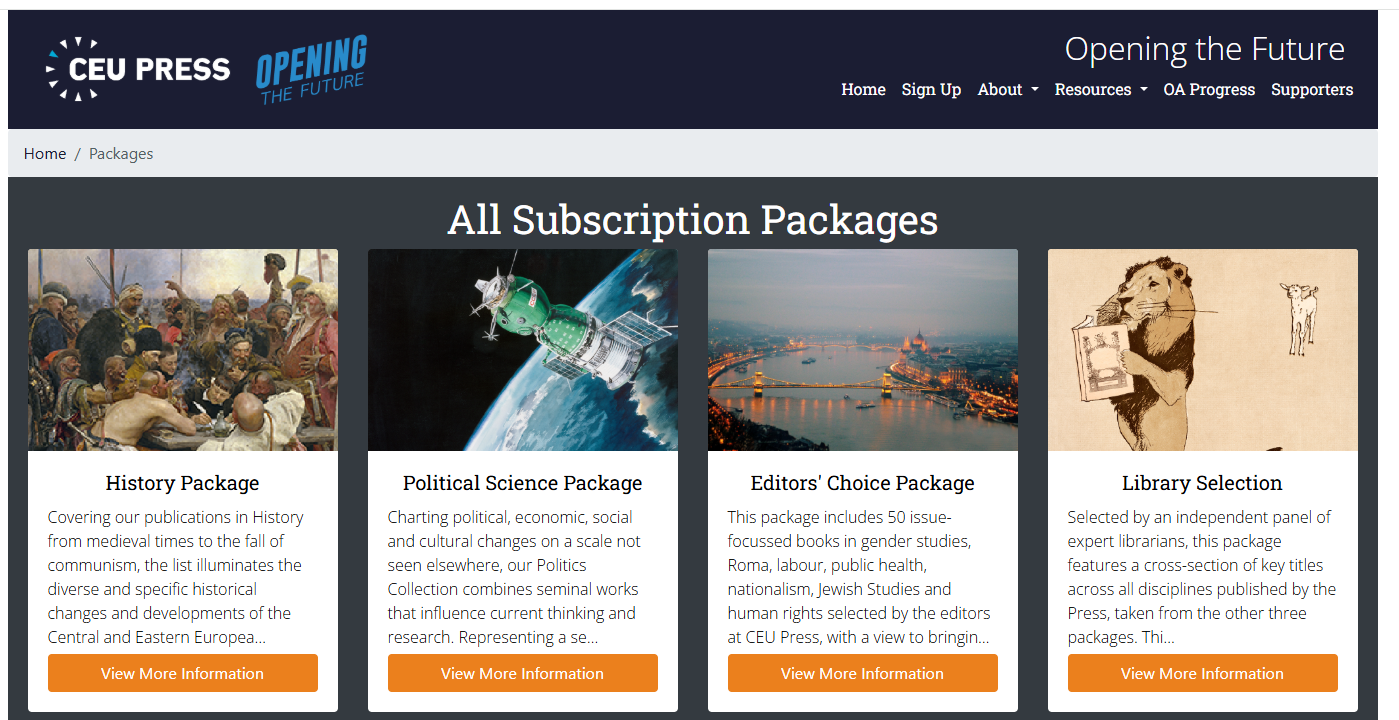 |
|
- .
- A full list of the titles in the backlist packages.
- If possible, it is also useful to embed a downloadable Excel file with the backlist package titles and metadata for the library to use.
- *
*If you are hosting with Jisc and Lyrasis, this might be links directly to their Licence subscriptions manager webpage where they can sign up for your offering (or a link to another page that hosts those links together). For billing done outside of Jisc and Lyrasis, this will need to be a form of some sort that triggers a notification to your finance department, and provides them with the necessary information, which will usually be the library, the library contact, the package they have signed up for, and the library’s IP range for the backlist package host to implement. For more information, please see our page titled ‘Sign-up Workflow’ and 'Sign-up Infrastructure' immediately below.
Sign-up Workflow
Despite its seeming simplicity, the workflow for Opening the Future is relatively complex, with multiple actors involved at different times. Coordination between different parties requires care and a technological infrastructure that can handle the effort.
The workflow has to handle the following core activities:
- Library sign up
- Payment processing
- Access control management
- Library cancellation
TOM TO UPDATE IMAGE
Actors and Actions
| Actors | Action | Notes |
| Library | Completes form on website | Triggers email alerts to correct contacts at the Press and intermediaries |
| Jisc, Lyrasis, Press | Depending on the region (or on your partnerships), Jisc, Lyrasis or the Press itself must process the signup. In the case of Jisc, the Library may also have to complete a signup on Jisc's system instead. | If a library signs up through Jisc’s independent catalogue platform, it may be necessary to duplicate the signup data into the Press’s own CRM system and OtF site. |
| Jisc, Lyrasis, Press, Project MUSE, Other platforms | The Press or intermediary (Jisc, Lyrasis) informs the platform provider (e.g. Project MUSE) that access should be granted to the signup institution | By default we recommend enabling access before payment is received and retracting it if not received within 3 months. |
| Jisc, Lyrasis, Press | Issue invoice to Library. | |
| Press | Send welcome email to Library. | This welcome email is an opportunity to thank the library and should include: Details of access to subscription packages A proposed announcement of the Library’s signup (see under Marketing and Outreach) |
| Library | Cancellation | If a library cancels within the three year window, access should be revoked. |
Sign-up Infrastructure
At its core, the sign-up process is the delivery of various pieces of information from the library to you, the publisher. These are:
- The identity and location of the library.
- The library's IP range for your content delivery provider to switch on their access to the backlist.
- Which package(s) they would like to sign up to.
- A contact for you to invoice and to discuss various payment details such as if they will pay all three years upfront or in annual instalments.
As noted before, Jisc and Lyrasis will provide this sort of technical sign-up functionality on their subscription manager platforms which you can link to on your site. But if you are managing your own subscriptions, and for subscriptions outside of the UK and US, you will need your own sign-up infrastructure. You may already have internal processes and CMSs that you can adapt to use on your Opening the Future programme in order to do this. If not, it can be as simple as a sign up form, such as Google Forms, which triggers a notification to you with the relevant information in order to process the sign up.
Alternatively, we provide a signup platform is available at the Github repository of the Birkbeck Centre for Technology and Publishing. The platform is written in Django/python and is available under the GNU Affero General Public License v3.0.
Features of this platform include:
- CMS system
- Ability to collect signup data
- Access control management system
- Multi-tenant hosting (more than one press per install)
- News and updates system
- Per user and per role access control
Running the signup infrastructure requires an independent web host capable of serving wsgi applications in python. The overheads of running this system locally should be matched to the Press’s in-house technical capacity. As always, the cost of free software must be measured in the time that it takes for an in-house individual to maintain a site vs. the cost of externalising/outsourcing such provision. Additionally, this will not be supported after April 2026. Therefore, unless you are confident that you have the technological capability to implement and sustain this, we do not recommend that you use it.
URL: https://github.com/BirkbeckCTP/signup
Delivery of Subscription Content
A core part of the Opening the Future model is the delivery of subscription content to participating libraries.
This is a process that will be familiar to libraries via their ordinary subscriptions and other forms of collections access. As detailed in the previous section on Organisational Partnerships, there are multiple options (listed are Project MUSE, Fulcrum and Sciendo), who you may already have a relationship with.
The conditions of access must be made clear in your offering. It is important that the content is hosted on a reputable platform that delivers appropriate metadata in standards-compliant formats and that the content is indexed in order to appear in library discoverability services. The platform hosts we suggested are able to provide this. Additionally, you must make clear the licensing terms under which the libraries will have access to the backlist package. See the next section on SERU for the easiest path towards licensing of subscription content.
Fixed Packages Should Not Change
While it is tempting to believe that packages can be reconfigured at will, the ability to deliver custom packages is beholden to the restrictions of external suppliers. For instance, ensuring consistent metadata is delivered to Project MUSE means that once a package has been setup by the remote supplier, it should be fixed permanently. This also allows libraries to ensure that once they have access to a package, it is never withdrawn, unless they cancel.

